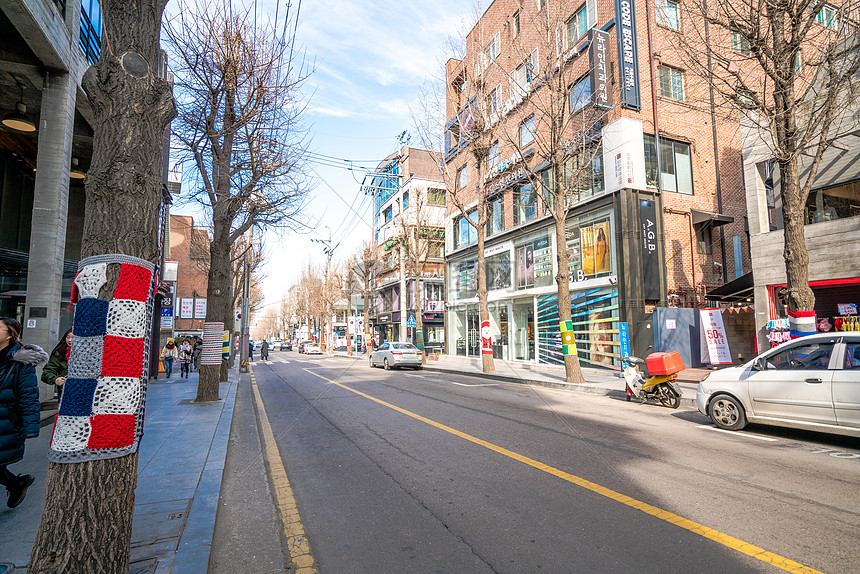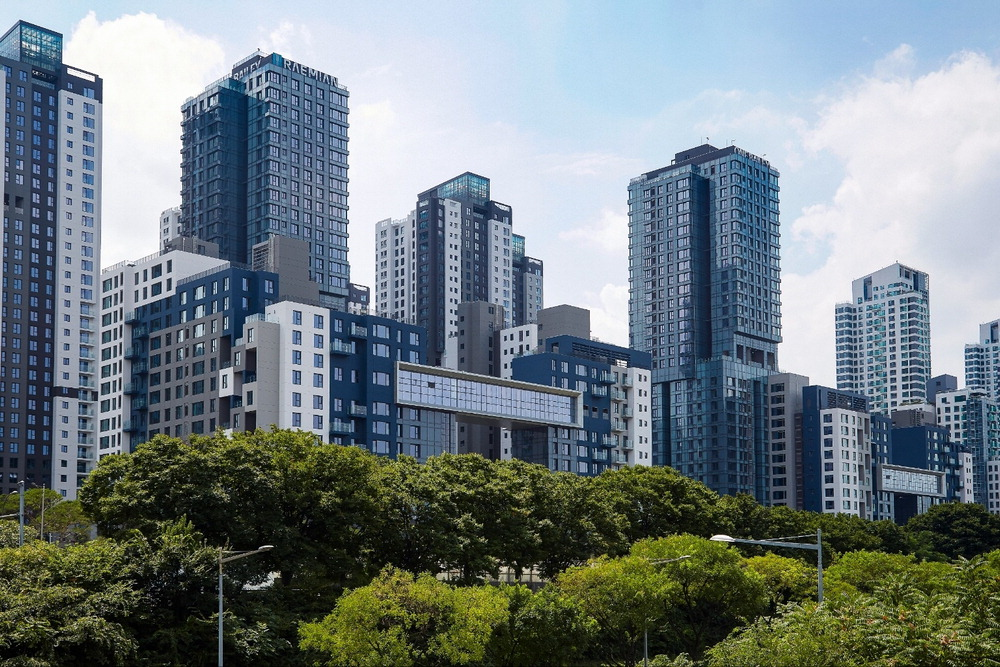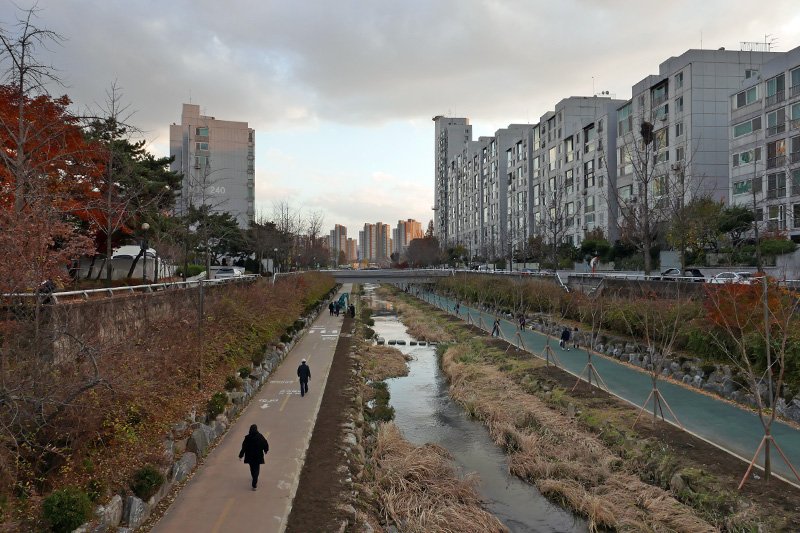Why Focus on Seoul Housing Prices?
As the capital and densely populated economic center of South Korea, Seoul’s real estate market has long attracted significant attention from both domestic and international investors.
From affluent districts like Gangnam to emerging development areas such as Yongsan and Eunpyeong, each neighborhood features unique price structures and growth potential.
For foreigners looking to settle in Korea, invest, or send their children abroad for education, understanding the trends in Seoul’s housing prices and related policy restrictions is especially important.

Overall Housing Price Levels in Seoul in 2025
According to statistics from the South Korean Ministry of Land, Infrastructure and Transport for the first quarter of 2025, Seoul’s real estate market continues to operate at a high level, with apartment prices remaining elevated and showing significant structural characteristics. Data indicates that the average transaction price for apartments in Seoul is approximately 1.1 billion KRW, which is roughly 820,000 USD at current exchange rates.
In terms of price per square meter, the average ranges between approximately 14,300 to 21,400 USD/m², while some residences in prime high-end areas such as Gangnam, Sinsa-dong, and Banpo exceed 28,600 USD/m².
A notable feature of Seoul’s real estate market is its high level of apartment dominance, with apartment-style housing accounting for more than 70% of the total residential market.

This structure not only reflects Seoul’s highly concentrated urban living pattern but also highlights the middle class’s preference for high-rise apartments with clear property rights, comprehensive facilities, and convenient transportation.
This trend bears strong similarities to the real estate markets of first-tier Chinese cities like Beijing and Shanghai, especially in terms of housing prices in central urban areas, where Seoul’s prices have shown a clear alignment with — and in some cases, even surpassed — those of these major Chinese cities.
Comparison of Housing Prices in Major Seoul Districts
| District | Average Price (KRW/평) | Price (USD/㎡) | District Characteristics |
|---|---|---|---|
| Gangnam | 42,000,000 | 9,650 | Most expensive in Seoul, strong in education and commerce |
| Seocho | 38,000,000 | 8,650 | Wealthy residential area, convenient living |
| Songpa | 34,000,000 | 7,400 | Home to Lotte World, Jamsil development zone |
| Mapo | 28,000,000 | 6,170 | Popular with young people, culturally diverse |
| Yongsan | 30,000,000 | 6,610 | Mixed commercial and residential area |
| Gwanak | 18,000,000 | 3,970 | Lower housing prices, good transportation |
| Seongbuk | 17,000,000 | 3,750 | Concentration of universities, strong student demand |
Gangnam District
Gangnam District is Seoul’s most iconic high-end residential area and a symbol of wealth, success, and concentrated educational resources in Korean society.
It hosts numerous prestigious schools (such as the Daechi-dong school district), many corporate headquarters, upscale shopping malls (like COEX), cosmetic surgery clinics, and international business facilities.

Due to its concentration of educational, medical, financial, and entertainment resources, Gangnam District has maintained high real estate prices over a long period, making it one of the most expensive areas in Seoul.
Seocho District
Located in the southern core of Seoul and adjacent to Gangnam District, Seocho District is traditionally considered one of Seoul’s affluent neighborhoods. It is not only a densely populated residential area but also an important hub for political, legal, and educational resources.

As one of the three Gangnam districts (Gangnam, Seocho, and Songpa), Seocho is highly regarded for its residential comfort, educational quality, and social status.
Songpa District
Originally a peripheral area of Seoul, Songpa District’s urban status was transformed with the hosting of the 1988 Seoul Olympics, which brought large venues such as Olympic Park and Jamsil Stadium to the district.

Over the past 30 years of rapid urbanization, Songpa has become the secondary central district in the southeast and is considered one of the most successful examples of Seoul’s “work-life balance” land-use planning concept.
Drivers Behind Seoul’s Housing Price Increases
First, the scarcity of high-quality educational resources is a major driver of rising housing prices. Traditional affluent districts like Gangnam and Seocho concentrate many of South Korea’s top-ranked primary and secondary schools, forming clusters of prestigious schools and renowned teachers. Housing in these sought-after school districts is extremely limited and fiercely contested by many families. Since education is a key channel for social mobility, middle-class Korean families invest heavily in their children’s education, which directly pushes up housing prices in core school zones.
Second, continuous improvements in urban transportation and planning policies provide strong support for housing prices. In recent years, Seoul has been expanding its rail transit network, with multiple new metro lines (such as light rail, western line, and others) planned and constructed. Areas previously inconvenient for transportation—such as northern Yongsan, Eunpyeong, and Gangseo—are now integrated into the “fast commuting zone.” This not only enhances residents’ convenience but also boosts housing demand and leads to significant value reappraisal along these transit corridors.
Third, sustained inflows of international capital into Seoul’s real estate market play a crucial role. Especially amid rising global uncertainties and relatively stable Korean interest rates, Seoul’s real estate is seen as a “safe asset.” Large numbers of investors from China, Singapore, the United States, and other countries continue to focus on new developments and high-end residences in core areas such as Gangnam, Yongsan, and Jamsil. The support from international buyers increasingly underpins housing prices.
Finally, population concentration intensifies the supply-demand imbalance in housing. As South Korea’s political, economic, and cultural center, Seoul hosts the largest number of jobs and the best medical, educational, and financial public resources nationwide. A continuous influx of young talent and white-collar workers drives steady growth in both rental and purchasing demand. However, limited developable land and slower new housing supply compared to population growth exacerbate housing shortages and price increases.
Buy or Rent: Which Is More Cost-Effective?
When deciding whether to buy or rent in Seoul, the rent-to-price ratio is a key economic indicator. This ratio compares the annual rental income to the property’s purchase price. According to first-quarter 2025 data, Seoul’s residential rent-to-price ratio generally ranges between 2% and 3%, significantly lower than the global average of 4% to 6% seen in major cities. This indicates that the investment return from rental income in Seoul is relatively low, with the market focusing more on asset preservation and appreciation rather than generating high rental yields.
From this perspective, buying property holds limited appeal for investors seeking short-term profits. Low rental returns combined with high taxes and transaction costs make Seoul’s real estate more of a hedge against inflation and risk—a value-preserving asset—rather than a high-yield cash flow investment.
Recommendations for Different Groups:
- Short-term residents (such as temporary workers or exchange students): Renting apartments is advisable, particularly through Korea’s unique jeonse (large lump-sum deposit lease) or wolse (monthly rent) systems. Jeonse requires tenants to pay a large deposit (usually over 50% of the property price) without monthly rent, fully refundable at lease end. This suits those with sufficient cash flow but who don’t plan to buy soon. Wolse offers greater flexibility for tenants with limited funds or mobility needs.
- Long-term residents or families with children studying in Korea: Buying property is more cost-effective if you plan to stay long-term. Despite high prices, rents in Seoul’s core areas are expected to keep rising in coming years. Popular locations near good school districts and subway lines see increasing rent and fierce competition for rentals. Buying early locks in costs, hedges against inflation, and may allow for capital gains from property appreciation.
Summary:
Seoul’s rent-to-price ratio suggests its property market favors long-term stable residents and asset holders. Short-term stays are better served by renting, while families and individuals with permanent plans benefit from purchasing property to secure housing costs and wealth accumulation.
2025 Seoul Real Estate Market Policy Updates
To curb rapid housing price increases and suppress speculative purchases, the South Korean government will continue and strengthen a series of real estate regulatory measures in 2025, focusing mainly on purchase restrictions, loan limits, and resale controls. The core objective is to prioritize stable housing while cooling down investment speculation.
Restrictions on Multiple-Home Ownership and Support for First-Time Buyers
Policies favor first-time buyers by imposing higher property and transaction taxes on households owning two or more homes. These owners face stricter bank loan conditions and purchase eligibility limits. Conversely, first-time buyers benefit from tax reductions and loan incentives, such as low-interest loans for young families settling long-term. This structural regulation aims to “restrain speculation and protect genuine demand,” encouraging housing to serve its residential purpose.
Tightening Purchase Restrictions
In popular areas such as Gangnam, Seocho, Songpa, and Yongsan, non-local residents and buyers without residential needs will face strict purchase limits. Some high-risk zones remain designated “regulated areas,” where policies include prohibiting multiple home purchases per household and stricter scrutiny of foreign investors. These measures aim to limit speculative capital inflows into core districts and secure housing availability for genuine buyers.
Implementation of “Price Reporting System” to Prevent Speculation
The government has upgraded the “actual price reporting system” in key areas including Gangnam and Yongsan. Buyers and sellers must report the true transaction price immediately after the deal closes. Transactions priced significantly above market averages will trigger investigations. This system helps curb artificial price inflation and deceptive listings, promoting transparency and market stability.
Lowering Loan-to-Value (LTV) Ratios
Loan regulations continue to tighten, with maximum loan amounts capped at 60% of the property value for first-home buyers in regulated areas starting 2025. In “high-risk speculative zones” like Gangnam and Seocho, LTV ratios may be further reduced to 40% or lower. This limits highly leveraged investment purchases and helps suppress irrational price hikes.
How Can Foreigners Buy Property in Seoul, South Korea?
South Korea generally allows foreigners to purchase property, but buyers must hold a valid residence visa, such as F-series visas (residence, permanent residency, marriage immigration, etc.) or D-series visas (student, corporate assignment, job-seeking, etc.). Short-term visitor visas do not permit property purchases.
The buying process includes signing the sales contract, completing real estate registration, paying taxes and fees, and transferring the property title. Required documents typically include a passport, alien registration card, proof of income, and bank deposit statements.
Regarding financing, foreigners usually face stricter loan conditions than local residents, often needing to provide a down payment of 40% or more. Loan interest rates and terms tend to be less favorable. Taxes involved include an acquisition tax of about 4%, a registration tax of 1.5%–2%, and an annual property tax based on the property value.
Overall, the threshold for foreigners buying property in South Korea is relatively high. It is advisable for those with long-term residency status and stable income to consider purchasing, while short-term residents or those without valid residence status are better suited to rent or invest cautiously.
Price Differences Between New Developments and Resale Homes in Seoul
New developments in Seoul generally carry a significant premium, especially in the city center and key redevelopment areas such as Yongsan and Mapo districts. These new properties are highly favored due to their modern facilities and contemporary designs.
In contrast, resale homes are often older apartments with relatively lower prices. However, buyers typically need to bear additional costs for renovations and maintenance.
In recent years, the Seoul government’s active promotion of “urban regeneration” projects has improved the overall environment and infrastructure of some older neighborhoods, significantly enhancing the market value of certain resale properties and narrowing the price gap with new developments.
Future Five-Year Seoul Housing Price Trends
| Year | Expected Annual Price Growth | Main Driving Factors |
|---|---|---|
| 2025 | +3% to +5% | Low interest rates + strong demand + overseas purchases |
| 2026 | +2% to +4% | Concentrated influx of new development projects |
| 2027 | Stable | Stronger policy interventions |
| 2028 | +1% to +2% | Long-term structural population concentration |
| 2029 | Depends on policies | Dependent on macroeconomic trends |
Seoul vs. Other Major Korean Cities: Housing Price Comparison
| City | Average Price (KRW/평) | Key Areas | Development Potential |
|---|---|---|---|
| Busan | 20,000,000 | Haeundae, Nam-gu | Seaside properties, transportation hub |
| Daegu | 15,000,000 | Suseong-gu, Dalseo-gu | Growing educational resources |
| Suwon | 18,000,000 | Paldal-gu, Yeongtong-gu | Seoul commuter belt, affordable prices |
| Incheon | 16,000,000 | Songdo, Yeonsu-gu | Emerging international business district |
Seoul’s housing prices remain the highest nationwide, but surrounding cities are rapidly catching up due to improved transportation and supportive policies.
Investment Advice and Risk Warnings
The ideal buyers for Seoul real estate mainly include: individuals living or working long-term in Korea; families with children seeking stable living and education; and investors focused on asset preservation and steady returns.
However, buyers should be aware of several risks:
First, fluctuations in the RMB-KRW exchange rate directly impact actual purchase costs and investment returns.
Second, ongoing government regulations—such as purchase restrictions, tighter loan limits, and increased taxes—may raise buying barriers and holding costs.
Third, market liquidity is uncertain; if housing prices stagnate or decline, reselling could become difficult. Buyers should carefully assess their needs and risk tolerance before purchasing.
Conclusion
In 2025, Seoul’s real estate market remains characterized by “high barriers, high attention, and high stability.” For foreigners planning long-term residence or asset allocation without frequent resale, Seoul continues to be a city worth serious consideration and investment.
It is recommended that buyers thoroughly research local housing prices, schools, transportation, and living convenience, stay informed of the latest Korean real estate laws and policies, and engage professional agents or legal advisors to assist throughout the purchasing process.